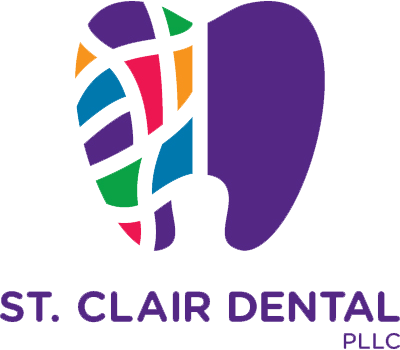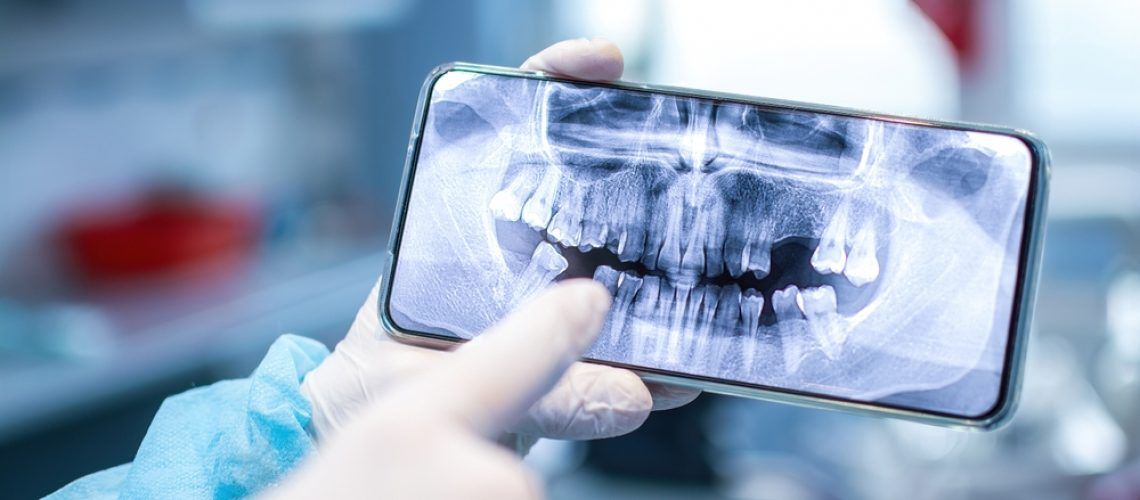In recent years, digital X-ray technology has transformed dentistry, offering significant benefits over traditional film-based X-rays. These advancements have improved diagnostic accuracy, patient safety, and treatment planning, making dental care more efficient and effective. At St. Clair Dental, PLLC, in Granbury, TX, Dr. Maureen Karl leverages these cutting-edge technologies to provide patients with the highest standard of care. Let’s explore how digital X-ray technology is revolutionizing dental practices.
The Shift from Traditional to Digital X-rays
Traditional X-rays have been a cornerstone of dental diagnostics for decades, but they come with limitations such as higher radiation exposure, longer processing times, and less detailed images. Digital X-rays address these issues, offering a more advanced, patient-friendly alternative. Here’s how they differ:
1. Reduced Radiation Exposure
One of the most significant advantages of digital X-rays is reducing radiation exposure. Digital sensors are far more sensitive to X-rays than traditional film, requiring much less radiation to produce clear images. This improvement enhances patient safety and allows for more frequent imaging when necessary, without compromising health.
2. Instant Image Availability
Unlike traditional X-rays, which require chemical processing to develop images, digital X-rays provide instant results. The digital sensors capture the image and display it on a computer screen within seconds, allowing Dr. Karl to diagnose issues and discuss treatment options with patients in real-time. This immediacy enhances the patient experience by reducing wait times and enabling quicker decision-making.
3. Enhanced Image Quality and Precision
Digital X-rays offer superior image quality compared to their traditional counterparts. The high-resolution images allow for greater detail, making it easier to identify and diagnose dental issues such as cavities, fractures, and bone loss. Additionally, digital images can be enhanced, magnified, or adjusted in contrast, providing a clearer view of specific areas that may be difficult to see with traditional film.
The Benefits of Digital X-rays in Dental Care
The advancements in digital X-ray technology offer a range of benefits that improve both patient care and the efficiency of dental practices. Here’s how digital X-rays are enhancing dental care at St. Clair Dental:
1. Improved Diagnostic Accuracy
The high-resolution images produced by digital X-rays allow for more accurate diagnoses. Dr. Karl can detect even the smallest signs of decay, infection, or other dental issues early on, leading to more effective treatment plans. This precision helps in preventing the progression of dental problems, ultimately saving patients time, money, and discomfort.
2. Enhanced Patient Communication and Education
With digital X-rays, patients can see what the dentist sees, right on the screen. This transparency allows Dr. Karl to explain diagnoses and treatment options more effectively, helping patients understand their oral health and make informed decisions. The ability to visualize problems in real-time often leads to increased patient engagement and satisfaction.
3. Environmentally Friendly
Traditional X-ray processing involves chemicals that are harmful to the environment. Digital X-rays eliminate the need for these chemicals, making the process more environmentally friendly. Additionally, the digital format reduces the need for physical storage space, as images can be stored electronically, contributing to a more sustainable practice.
Advanced Applications of Digital X-ray Technology
Beyond the basics of imaging, digital X-ray technology offers advanced applications that further enhance dental care. These innovations include:
1. 3D Imaging and Cone Beam CT Scans
One of the most exciting advancements in digital X-ray technology is the development of 3D imaging and Cone Beam Computed Tomography (CBCT) scans. These technologies provide a three-dimensional view of the patient’s dental structures, including teeth, bones, and soft tissues. CBCT scans are particularly useful for:
- Implant Planning: 3D imaging allows for precise measurement and planning of dental implant placement, reducing the risk of complications.
- Orthodontics: Detailed 3D images help in planning orthodontic treatments by providing a comprehensive view of the jaw and teeth alignment.
- Endodontics: CBCT scans assist in identifying complex root canal structures, leading to more successful treatments.
2. Digital Radiography Integration with CAD/CAM Technology
Digital X-rays can be integrated with CAD/CAM (Computer-Aided Design/Computer-Aided Manufacturing) technology to streamline the design and creation of dental restorations. This integration allows for:
- Accurate Restorations: The precise images captured by digital X-rays can be used to design crowns, bridges, and other restorations that fit perfectly with the patient’s natural teeth.
- Same-Day Restorations: Some practices can produce restorations on-site within the same visit, reducing the need for multiple appointments.
3. Digital Image Sharing and Collaboration
Digital X-rays can be easily shared with other dental specialists, enhancing collaboration and continuity of care. Whether a patient needs to see an oral surgeon, orthodontist, or periodontist, digital images can be securely transmitted to ensure all providers have access to the most accurate and up-to-date information.
The Future of Digital X-ray Technology
As digital X-ray technology continues to evolve, the future of dental imaging looks promising. Innovations such as artificial intelligence (AI) integration, further reductions in radiation exposure, and enhanced imaging techniques are on the horizon. These advancements will continue to improve diagnostic accuracy, patient safety, and the overall dental experience.
At St. Clair Dental, PLLC, Dr. Maureen Karl remains committed to staying at the forefront of these technological advancements. By incorporating the latest digital X-ray technology into her practice, Dr. Karl ensures that patients receive the most accurate diagnoses and effective treatments available.
Embracing Technology for Better Oral Health
The advancements in digital X-ray technology represent a significant leap forward in dental care, offering numerous benefits for both patients and practitioners. From reduced radiation exposure and enhanced image quality to advanced applications like 3D imaging, digital X-rays transform how dentists diagnose and treat oral health issues.
For patients in Granbury, TX, these advancements mean better care, quicker treatments, and a more comfortable experience at the dentist’s office. At St. Clair Dental, PLLC, Dr. Maureen Karl is proud to utilize the latest digital X-ray technology to provide the highest-quality care to her patients. Embracing these innovations is not just about keeping up with the latest trends; it’s about offering the best possible outcomes for your oral health.
Sources:
- Schulze, R. K., & Berndt, D. (2011). Digital X-rays in Dentistry: A New Standard in Diagnostic Imaging. Journal of Digital Imaging.
- Scarfe, W. C., & Farman, A. G. (2008). What Is Cone-Beam CT and How Does It Work? Dental Clinics of North America.
- White, S. C., & Pharoah, M. J. (2014). The Evolution and Application of Digital Radiography in Dentistry. Oral Radiology.

